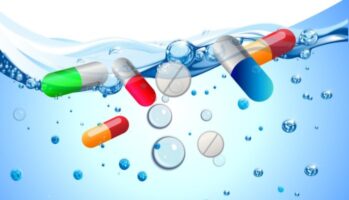PHARMACEUTICALS AND PERSONAL CARE PRODUCT (PPCP) POLLUTION IN WATER
Pharmaceuticals and Personal Care Product (PPCP) Pollution in Water
Pharmaceuticals and Personal Care Products (PPCPs) have become an integral part of modern life, contributing to our health and well-being. However, the widespread use of these products has also led to a concerning issue: the pollution of our water sources. PPCP pollution in water is a complex problem that requires attention from both individuals and regulatory authorities. In this article, we’ll delve into the key points surrounding this issue.
1. The PPCP Menace
PPCPs encompass a wide range of substances, including prescription drugs, over-the-counter medications, cosmetics, and personal care products. Many of these substances are designed to be biologically active, making them effective in their intended use. However, when they find their way into water bodies, they can pose a significant threat to the environment.
2. Sources of PPCP Pollution
The contamination of water sources with PPCPs occurs through various routes:
a. Human Excretion: When individuals consume PPCPs, their bodies metabolize the compounds, and the remnants are excreted in urine and feces. These compounds eventually enter wastewater systems.
b. Improper Disposal: Disposing of unused or expired medications down the sink or toilet is a common practice, leading to the direct introduction of PPCPs into the water supply.
c. Agricultural Runoff: PPCPs used in veterinary medicine can find their way into water bodies through agricultural runoff.
d. Wastewater Treatment Plants: While wastewater treatment plants are designed to remove contaminants, they may not effectively eliminate all PPCPs. Some compounds are resilient and can persist through treatment processes.
3. Environmental Impact
The presence of PPCPs in water bodies can have several adverse effects:
a. Ecological Disruption: Aquatic life is particularly vulnerable to PPCP pollution. Endocrine disruptors in these products can affect the reproductive and developmental systems of fish and other aquatic organisms.
b. Drug Resistance: The constant exposure of microorganisms to low levels of pharmaceuticals can lead to the development of antibiotic resistance, a global health concern.
c. Bioaccumulation: Some PPCPs can accumulate in the tissues of aquatic organisms and move up the food chain, potentially affecting human health.
4. Human Health Concerns
While the impact of PPCP pollution on human health is not yet fully understood, there are concerns about potential health risks. Long-term exposure to low levels of pharmaceuticals through drinking water or aquatic food sources may have subtle yet significant health implications.
5. Regulatory Measures
Efforts are underway to address PPCP pollution:
a. Monitoring and Research: Regulatory bodies and research institutions are conducting studies to understand the extent of PPCP contamination and its effects on the environment and human health.
b. Improved Wastewater Treatment: Enhancing wastewater treatment processes to better remove PPCPs is a priority.
c. Public Awareness: Promoting responsible disposal of medications and personal care products can reduce the direct introduction of PPCPs into water bodies.
6. Personal Responsibility
Individuals can also contribute to mitigating PPCP pollution:
a. Proper Medication Disposal: Dispose of unused or expired medications at designated collection sites rather than flushing them down the toilet.
b. Use Eco-Friendly Products: Opt for environmentally friendly personal care products, which are often less harmful to aquatic ecosystems.
c. Reduce Consumption: Be mindful of overusing medications and personal care products, as excess usage can contribute to pollution.
In conclusion, PPCP pollution in water is a multifaceted issue with environmental and potential human health consequences. Addressing this problem requires a collaborative effort between individuals, regulatory agencies, and the pharmaceutical and personal care product industries. By understanding the sources, impact, and potential solutions, we can work towards cleaner and safer water sources for current and future generations.


